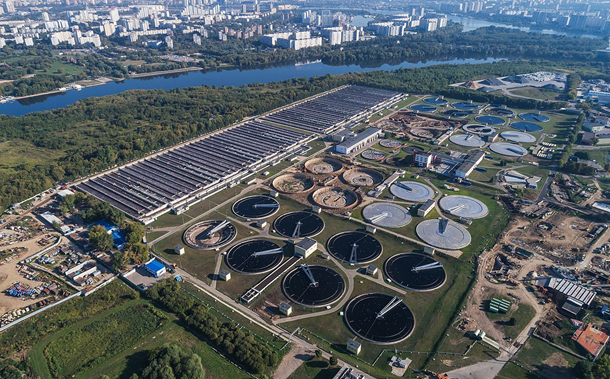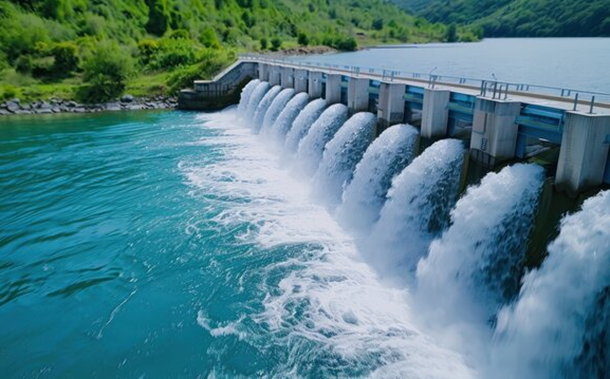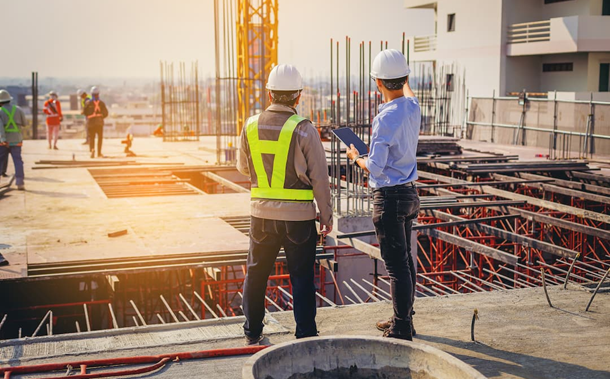Impact Stiffness of Linear Viscoelastic Model for Seismic Pounding Simulation: An Experimental Evaluation
Downloads
Doi:10.28991/CEJ-2023-09-06-01
Full Text:PDF
Downloads
[2] Schramm, U., & Pilkey, W. D. (1996). Optimal design of structures under impact loading. Shock and Vibration, 3(1), 69-81. doi:10.3233/SAV-1996-3108.
[3] Naderpour, H., Barros, R. C., Khatami, S. M., & Jankowski, R. (2016). Numerical Study on Pounding between Two Adjacent Buildings under Earthquake Excitation. Shock and Vibration, 2016, 1–9. doi:10.1155/2016/150478.
[4] Anagnostopoulos, S. A. (1995, August). Earthquake induced pounding: State of the art. Proceedings of the 10th European Conference on Earthquake Engineering. 28 August-2 September, 1994, Rotterdam, Netherlands.
[5] Anagnostopoulos, S. A. (1996). Building pounding re-examined: how serious a problem is it. 11th world conference on earthquake engineering, 23-28 June, 1996, Acapulco, Mexico.
[6] Rosenblueth, E., & Meli, R. (1986). The 1985 Mexico Earthquake. Concrete international, 8(5), 23-34.
[7] Valles-Mattox, R., & Reinhorn, A. (1996). Evaluation, prevention and mitigation of pounding effects in building structures. 11th world conference on earthquake engineering, 23-28 June, 1996, Acapulco, Mexico.
[8] Lin, J., & Weng, C. (2002). A study on seismic pounding probability of buildings in Taipei metropolitan area. Journal of the Chinese Institute of Engineers, 25(2), 123–135. doi:10.1080/02533839.2002.9670687.
[9] Lin, C. C. J., Hung, H. H., Liu, K. Y., & Chai, J. F. (2010). Reconnaissance observation on bridge damage caused by the 2008 Wenchuan (China) earthquake. Earthquake Spectra, 26(4), 1057–1083. doi:10.1193/1.3479947.
[10] Cole, G., Chouw, N., & Dhakal, R. (2011). Building and bridge pounding damage observed in the 2011 Christchurch earthquake. Bulletin of the New Zealand Society for Earthquake Engineering, 44(4), 334–341. doi:10.5459/bnzsee.44.4.334-341.
[11] Chouw, N., & Hao, H. (2012). Pounding damage to buildings and bridges in the 22 February 2011 Christchurch earthquake. International Journal of Protective Structures, 3(2), 123–140. doi:10.1260/2041-4196.3.2.123.
[12] Shrestha, B., & Hao, H. (2018). Building Pounding Damages Observed during the 2015 Gorkha Earthquake. Journal of Performance of Constructed Facilities, 32(2), 4018006. doi:10.1061/(asce)cf.1943-5509.0001134.
[13] Pratesi, F., Sorace, S., & Terenzi, G. (2014). Analysis and mitigation of seismic pounding of a slender R/C bell tower. Engineering Structures, 71, 23–34. doi:10.1016/j.engstruct.2014.04.006.
[14] Liolios, A., Liolios, A., Hatzigeorgiou, G., & Radev, S. (2014). Pounding effects on the earthquake response of adjacent reinforced concrete structures strengthened by cable elements. Journal of Theoretical and Applied Mechanics (Poland), 44(2), 41–56. doi:10.2478/jtam-2014-0009.
[15] Kazemi, F., Miari, M., & Jankowski, R. (2021). Investigating the effects of structural pounding on the seismic performance of adjacent RC and steel MRFs. Bulletin of Earthquake Engineering, 19(1), 317–343. doi:10.1007/s10518-020-00985-y.
[16] Filiatrault, A., Wagner, P., & Cherry, S. (1995). Analytical prediction of experimental building pounding. Earthquake Engineering & Structural Dynamics, 24(8), 1131–1154. doi:10.1002/eqe.4290240807.
[17] Chau, K. T., Wei, X. X., Guo, X., & Shen, C. Y. (2003). Experimental and theoretical simulations of seismic poundings between two adjacent structures. Earthquake Engineering and Structural Dynamics, 32(4), 537–554. doi:10.1002/eqe.231.
[18] Jaradat, Y., Sobhi, P., & Far, H. (2023). An Investigation into Adequacy of Separation Gap to Preclude Earthquake-induced Pounding. Structural Engineering and Mechanics.
[19] Rahman, A. M., Carr, A. J., & Moss, P. J. (2000). Structural pounding of adjacent multi-storey structures considering soil flexibility effects. Proceedings of the 12th World Conference on Earthquake Engineering, 30 January, 2000, Auckland, New Zealand.
[20] Chouw, N. (2002). Influence of soil-structure interaction on pounding response of adjacent buildings due to near-source earthquakes. Journal of Applied Mechanics, 5, 543–553. doi:10.2208/journalam.5.543.
[21] Saleh, A., Far, H., & Mok, L. (2018). Effects of different support conditions on experimental bending strength of thin walled cold formed steel storage upright frames. Journal of Constructional Steel Research, 150, 1–6. doi:10.1016/j.jcsr.2018.07.031.
[22] Hao, H., Bi, K., Chouw, N., & Ren, W. X. (2013). State-of-the-art review on seismic induced pounding response of bridge structures. Journal of Earthquake and Tsunami, 7(3), 1350019. doi:10.1142/S179343111350019X.
[23] Jia, H. Y., Lan, X. L., Zheng, S. X., Li, L. P., & Liu, C. Q. (2019). Assessment on required separation length between adjacent bridge segments to avoid pounding. Soil Dynamics and Earthquake Engineering, 120, 398–407. doi:10.1016/j.soildyn.2019.01.031.
[24] Cole, G., Dhakal, R., Carr, A., & Bull, D. (2010). Interbuilding pounding damage observed in the 2010 darfield earthquake. Bulletin of the New Zealand Society for Earthquake Engineering, 43(4), 382–386. doi:10.5459/bnzsee.43.4.382-386.
[25] Maison, B. F., & Kasai, K. (1990). Analysis for a Type of Structural Pounding. Journal of Structural Engineering, 116(4), 957–977. doi:10.1061/(asce)0733-9445(1990)116:4(957).
[26] Anagnostopoulos, S. A. (1988). Pounding of buildings in series during earthquakes. Earthquake Engineering & Structural Dynamics, 16(3), 443–456. doi:10.1002/eqe.4290160311.
[27] Jankowski, R., Wilde, K., & Fujino, Y. (1998). Pounding of superstructure segments in isolated elevated bridge during earthquakes. Earthquake Engineering and Structural Dynamics, 27(5), 487–502. doi:10.1002/(SICI)1096-9845(199805)27:5<487::AID-EQE738>3.0.CO;2-M.
[28] Anagnostopoulos, S. A., & Spiliopoulos, K. V. (1992). An investigation of earthquake induced pounding between adjacent buildings. Earthquake Engineering & Structural Dynamics, 21(4), 289–302. doi:10.1002/eqe.4290210402.
[29] Crozet, V., Politopoulos, I., Yang, M., Martinez, J. M., & Erlicher, S. (2017). Influential Structural Parameters of Pounding between Buildings during Earthquakes. Procedia Engineering, 199, 1092–1097. doi:10.1016/j.proeng.2017.09.084.
[30] Shehata E. Abdel Raheem. (2006). Seismic Pounding between Adjacent Building Structures. Electronic Journal of Structural Engineering, 6, 66–74. doi:10.56748/ejse.659.
[31] Mate, N. U., Bakre, S. V., & Jaiswal, O. R. (2012). Comparative study of impact simulation models for linear elastic structures in seismic pounding. 15th World Conference on Earthquake Engineering, 24-28 September, 2012, Lisbon, Portugal.
[32] Muthukumar, S., & DesRoches, R. (2006). A Hertz contact model with non-linear damping for pounding simulation. Earthquake Engineering and Structural Dynamics, 35(7), 811–828. doi:10.1002/eqe.557.
[33] Ye, K., Li, L., & Zhu, H. (2009). A note on the Hertz contact model with nonlinear damping for pounding simulation. Earthquake Engineering and Structural Dynamics, 38(9), 1135–1142. doi:10.1002/eqe.883.
[34] Jankowski, R. (2005). Non-linear viscoelastic modelling of earthquake-induced structural pounding. Earthquake Engineering and Structural Dynamics, 34(6), 595–611. doi:10.1002/eqe.434.
[35] Khatiwada, S., Chouw, N., & Butterworth, J. W. (2013). Evaluation of numerical pounding models with experimental validation. Bulletin of the New Zealand Society for Earthquake Engineering, 46(3), 117–130. doi:10.5459/bnzsee.46.3.117-130.
[36] Pant, D. R., Wijeyewickrema, A. C., & Ohmachi, T. (2010). Seismic pounding between reinforced concrete buildings: A study using two recently proposed contact element models 14th European Conference on. Earthquake Engineering, 30 August-3 September, 2010, Ohrid, Republic of Macedonia.
[37] Jaradat, Y., Far, H., & Mortazavi, M. (2022). Experimental Evaluation of Theoretical Impact Models for Seismic Pounding. Journal of Earthquake Engineering, 1–21. doi:10.1080/13632469.2022.2131654.
[38] Goldsmith, W. (2001). IMPACT–the theory and physics of colliding solids. Dover Publication, New York, United States.
[39] Komodromos, P., Polycarpou, P. C., Papaloizou, L., & Phocas, M. C. (2007). Response of seismically isolated buildings considering poundings. Earthquake Engineering and Structural Dynamics, 36(12), 1605–1622. doi:10.1002/eqe.692.
[40] Licari, M., Sorace, S., & Terenzi, G. (2015). Nonlinear modeling and mitigation of seismic pounding between R/C frame buildings. Journal of Earthquake Engineering, 19(3), 431–460. doi:10.1080/13632469.2014.984370.
[41] Guo, A., Cui, L., & Li, H. (2012). Impact stiffness of the contact-element models for the pounding analysis of highway bridges: Experimental evaluation. Journal of Earthquake Engineering, 16(8), 1132–1160. doi:10.1080/13632469.2012.693243.
[42] Wada, A., Shinozaki, Y., & Nakamura, N. (1984). Collapse of building with expansion joints through collision caused by earthquake motion. Proceedings of the 8th World Conference on Earthquake Engineering, 21-28 July, 1984, San Francisco, United States.
[43] Maison, B. F., & Kasai, K. (1992). Dynamics of pounding when two buildings collide. Earthquake Engineering & Structural Dynamics, 21(9), 771–786. doi:10.1002/eqe.4290210903.
[44] Jankowski, R. (2008). Comparison of Numerical Models of Impact Force for Simulation of Earthquake-Induced Structural Pounding. Lecture Notes in Computer Science, 710–717. doi:10.1007/978-3-540-69384-0_76.
[45] Cole, G. L., Dhakal, R. P., Carr, A. J., & Bull, D. K. (2012). 3D modelling of building pounding including diaphragm flexibility. 15th World Conference on Earthquake Engineering, 24-28 September, 2012, Lisbon, Portugal.
[46] Jaradat, Y., & Far, H. (2021). Optimum stiffness values for impact element models to determine pounding forces between adjacent buildings. Structural Engineering and Mechanics, 77(2), 293–304. doi:10.12989/sem.2021.77.2.293.
[47] Cole, G., Dhakal, R., Carr, A., & Bull, D. (2011). An investigation of the effects of mass distribution on pounding structures. Earthquake Engineering and Structural Dynamics, 40(6), 641–659. doi:10.1002/eqe.1052.
[48] Xu, X., Xu, X., Liu, W., & Zhou, D. (2016). A new formula of impact stiffness in linear viscoelastic model for pounding simulation. Shock and Vibration, 2016. doi:10.1155/2016/5861739.
[49] Ghandil, M., & Aldaikh, H. (2017). Damage-based seismic planar pounding analysis of adjacent symmetric buildings considering inelastic structure–soil–structure interaction. Earthquake Engineering and Structural Dynamics, 46(7), 1141–1159. doi:10.1002/eqe.2848.
[50] Naserkhaki, S., Aziz, F. N. A. A., & Pourmohammad, H. (2012). Parametric study on earthquake induced pounding between adjacent buildings. Structural Engineering and Mechanics, 43(4), 503–526. doi:10.12989/sem.2012.43.4.503.
[51] López-Almansa, F., & Kharazian, A. (2018). New formulation for estimating the damping parameter of the Kelvin-Voigt model for seismic pounding simulation. Engineering Structures, 175, 284–295. doi:10.1016/j.engstruct.2018.08.024.
[52] Polycarpou, P. C., & Komodromos, P. (2010). Earthquake-induced poundings of a seismically isolated building with adjacent structures. Engineering Structures, 32(7), 1937–1951. doi:10.1016/j.engstruct.2010.03.011.
[53] Abdel-Mooty, M., Al-Atrpy, H., & Ghouneim, M. (2009). Modeling and analysis of factors affecting seismic pounding of adjacent multi-story buildings. Earthquake Resistant Engineering Structures VII. doi:10.2495/eres090121.
[54] Tabatabaiefar, S., Fatahi, B., & Samali, B. (2014). Numerical and experimental investigations on seismic response of building frames under influence of soil-structure interaction. Advances in Structural Engineering, 17(1), 109–130. doi:10.1260/1369-4332.17.1.109.
[55] Chopra, A. K. (2007). Dynamics of structures. Pearson Education India, Noida, India.
[56] Papagiannopoulos, G. A., & Hatzigeorgiou, G. D. (2011). On the use of the half-power bandwidth method to estimate damping in building structures. Soil Dynamics and Earthquake Engineering, 31(7), 1075–1079. doi:10.1016/j.soildyn.2011.02.007.
[57] Tabatabaiefar, H. R. (2016). Detail design and construction procedure of laminar soil containers for experimental shaking table tests. International Journal of Geotechnical Engineering, 10(4), 328–336. doi:10.1080/19386362.2016.1145419.
[58] Yaghmaei-Sabegh, S., & Jalali-Milani, N. (2012). Pounding force response spectrum for near-field and far-field earthquakes. Scientia Iranica, 19(5), 1236–1250. doi:10.1016/j.scient.2012.07.012.
[59] Hatzigeorgiou, G. D. (2010). Damping modification factors for SDOF systems subjected to near-fault, far-fault and artificial earthquakes. Earthquake Engineering and Structural Dynamics, 39(11), 1239–1258. doi:10.1002/eqe.991.
[60] Yaghmaei-Sabegh, S., & Tsang, H. H. (2011). An updated study on near-fault ground motions of the 1978 Tabas, Iran, earthquake (Mw = 7.4). Scientia Iranica, 18(4 A), 895–905. doi:10.1016/j.scient.2011.07.018.
[61] K-Karamodin, A., & H-Kazemi, H. (2010). Semi-active control of structures using neuro-predictive algorithm for MR dampers. Structural Control and Health Monitoring, 17(3), 237–253. doi:10.1002/stc.278.
[62] Singh, V., & Sangle, K. (2022). Analysis of vertically oriented coupled shear wall interconnected with coupling beams. HighTech and Innovation Journal, 3(2), 230-242. doi:10.28991/HIJ-2022-03-02-010.
[63] Pitilakis, D., Dietz, M., Wood, D. M., Clouteau, D., & Modaressi, A. (2008). Numerical simulation of dynamic soil-structure interaction in shaking table testing. Soil Dynamics and Earthquake Engineering, 28(6), 453–467. doi:10.1016/j.soildyn.2007.07.011.
[64] AS/NZS3678. (2011). Structural steel”Hot-rolled plates, floorplates and slabs. Australian Standards, Sydney, Australia.
[65] Naserkhaki, S., El-Richa, M., Abdul Azizb, F. N. A., & Pourmohammadc, H. (2013). Separation gap, a critical factor in earthquake induced pounding between adjacent buildings. Asian Journal of Civil Engineering, 14(6), 881–898.
[66] Bennett, J. O., Briggs, W. L., & Badalamenti, A. (2008). Using and understanding mathematics: A quantitative reasoning approach. Pearson Addison Wesley, Reading, United Kingdom.
[67] Far, H., & Flint, D. (2017). Significance of using isolated footing technique for residential construction on expansive soils. Frontiers of Structural and Civil Engineering, 11(1), 123–129. doi:10.1007/s11709-016-0372-8.
- Authors retain all copyrights. It is noticeable that authors will not be forced to sign any copyright transfer agreements.
- This work (including HTML and PDF Files) is licensed under a Creative Commons Attribution 4.0 International License.![]()














